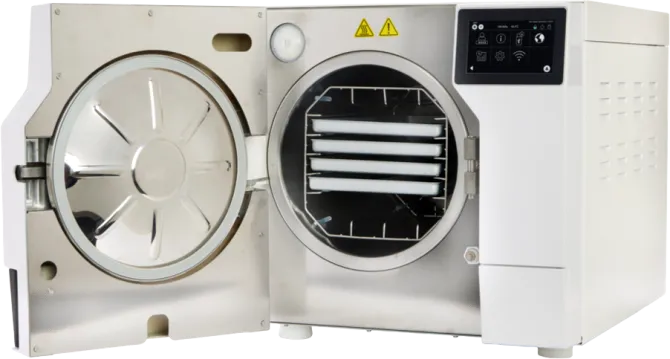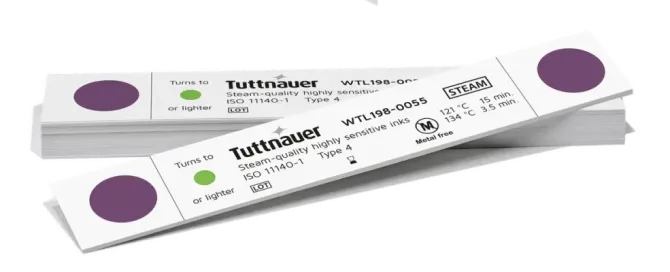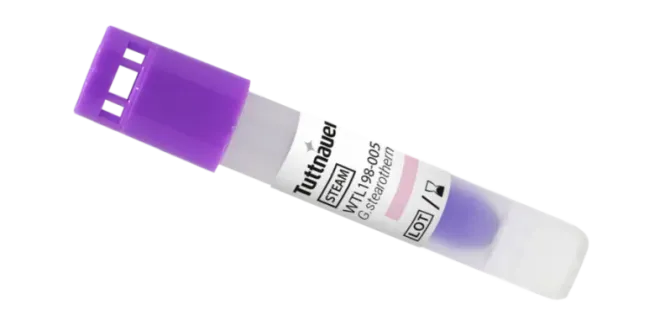Autoclave Sterilization: Cycle Selection, Validation, and Load-Specific Best Practices
Autoclaves are the cornerstone of sterilization in medical, dental, laboratory, and industrial settings, using high-pressure saturated steam to eliminate all microbial life, including bacteria, viruses, fungi, spores, and, with specialized protocols, prions (CDC Disinfection and Sterilization Guideline). Invented by Charles Chamberland in 1879, autoclaves have evolved from simple pressure vessels to sophisticated systems with advanced cycle options and validation methods (see Who Invented the Autoclave and Its Historical Impact). This guide provides a comprehensive overview of autoclave sterilization, focusing on cycle selection, validation techniques, and load-specific considerations to ensure safety, compliance, and efficacy in healthcare and research environments.
Briefly, What Is an Autoclave?
An autoclave is a specialized machine that uses high-pressure steam to sterilize tools, equipment, and materials. By reaching temperatures much higher than boiling water, autoclaves destroy harmful microorganism and even prions. They are essential in hospitals, laboratories, dental clinics, and many industries to ensure that instruments and materials are sterile. For more details see What Is an Autoclave Sterilizer and How Does It Work.
What Is Autoclave Sterilization?
Autoclave sterilization uses moist heat at 121–134°C and 15–30 psi to denature microbial proteins, disrupt cell membranes, and destroy nucleic acids, achieving a sterility assurance level (SAL) of 10$^{-6}$ Unlike boiling or chemical disinfectants, autoclaves reliably eliminate resistant spores (e.g., Geobacillus stearothermophilus) and, with extended cycles, prions, making them essential for infection control and research integrity (see What Does an Autoclave - Kill, Bacteria, Viruses, Fungi, Prions). The process involves loading items into the autoclave chamber, removing air, injecting steam, maintaining sterilizing conditions, and drying, as detailed in How Does an Autoclave Work. Autoclaves are versatile, sterilizing surgical instruments, dental tools, laboratory glassware, biohazardous waste, and liquids, provided proper cycle selection and load preparation are followed (see Types of Autoclave Sterilizers).
Key Mechanisms
- Protein Denaturation: Steam’s latent heat coagulates microbial proteins, halting cellular functions (see How Does an Autoclave Kill Microorganisms).
- Cell Membrane Disruption: High temperatures cause lysis, particularly effective for vegetative bacteria and viruses.
- Nucleic Acid Damage: Heat prevents microbial replication, ensuring long-term sterility.
- Prion Inactivation: Extended cycles (≥134°C, ≥18 minutes) with chemical pre-treatment (e.g., sodium hydroxide) inactivate prions (CDC).
Types of Autoclaves and Cycle Selection
Choosing the right autoclave and cycle is critical for effective sterilization, as different loads require specific air removal and steam penetration methods (see Types of Autoclave Sterilizers). Standard temperatures range from 121–134°C, with specialized cycles at 115–135°C for heat-sensitive materials or prions, as outlined in Autoclave Temperature Range for Effective Sterilization. Cycle selection must account for load (the things you sterilize inside an autoclave chamber) complexity to ensure steam reaches all surfaces.
Common Types of Autoclaves and Their Applications
Autoclaves come in various sizes and designs to suit different environments:
- Benchtop Autoclaves: Compact units ideal for small labs, dental offices, or clinics.
- Vertical or Top-Loading Autoclaves: Often used in research labs for sterilizing glassware and media.
- Horizontal or Floor-Standing Autoclaves: Used in hospitals or industrial settings for large volumes of instruments.
- Industrial Autoclaves: Large, custom-built units for manufacturing, pharmaceutical, or research applications.
To learn more, see "Types of Autoclave Sterilizers" that covers selecting the right type depending on your workload, available space, and sterilization requirements.
Autoclave Classes (EN 13060)
- Class N (Gravity Displacement): Uses steam to displace air downward. Best for unwrapped, non-porous solids (e.g., metal instruments). Cycle: 121°C for 15–20 minutes or 132°C for 3–10 minutes (see Sterilization Time for Unwrapped Items in Autoclaves Guide).
- Class S (Partial Vacuum): Employs steam pulsing for specific wrapped or hollow loads. Cycle: Varies by manufacturer specifications.
- Class B (Pre-Vacuum): Uses a vacuum pump for deep air removal, ideal for wrapped, hollow, or porous loads (e.g., dental handpieces, surgical packs). Cycle: 132–134°C for 3–10 minutes (EN 13060:2025).
Specialized Cycles
- Liquid Cycles: Slow exhaust prevents boil-over of liquids (e.g., media, broths). Cycle: 121°C for 15–30 minutes (see Autoclave Cycle Programs and Time Frames).
- Prion Cycles: Extended cycles (134°C for ≥18 minutes) with chemical pre-treatment for high-risk instruments (see What Does an Autoclave Kill Bacteria Viruses Fungi Prions).
- Immediate-Use Steam Sterilization (IUSS) (also known as "flash sterilization"): Rapid cycles (132°C for 3–10 minutes) for immediate-use unwrapped items, not suitable for storage (see Sterilization Time for Unwrapped Items in Autoclaves Guide).
Choosing the Right Cycle for Autoclave Sterilization
- Unwrapped Solids: Use Class N gravity cycles for simple metal instruments.
- Wrapped/Hollow Loads: Select Class B pre-vacuum cycles for dental tools or surgical packs to ensure steam penetration (see Helix Test Guide).
- Liquids: Opt for liquid cycles to prevent boil-over.
- Porous Loads: Use a pre-vacuum cycle, and when necessary with Bowie-Dick tests to verify air removal (see Bowie Dick Test and Cycle Guide).
Proper cycle selection enhances sterilization efficacy and prevents failures due to air entrapment or insufficient exposure to steam (see Autoclave Cycle Programs and Time Frames).
Autoclave Cost Considerations
Autoclaves range in size/capacity, features/complexity in intended use which has an impact on cost. When selecting an autoclave, consider the volume and type of materials you need to sterilize, turnaround time/throughput, available space, and your budget. Remember to factor in long-term maintenance and operational costs to ensure the best value for your facility. For details see Autoclave Cost Guide for Dental Medical Hospital and Laboratory Settings).
Load-Specific Considerations
Effective sterilization depends on proper load preparation and arrangement to ensure steam penetration and microbial kill (see How to Load an Autoclave Guide).
Best Practices for Loading
- Avoid Overloading: Keep loads at 75–80% capacity to allow steam circulation (see How to Load an Autoclave Guide).
- Use Trays/Racks: Place items on perforated stainless steel or polypropylene trays to ensure steam access.
- Position Correctly: Open hinged instruments, tilt containers at 45° for liquids, and place heavy items on lower racks.
- Separate Load Types: Avoid mixing wrapped/unwrapped items or liquids with solids to prevent cycle mismatches.
- Use Permeable Packaging: Employ steam-permeable pouches or wraps for wrapped loads, placed paper-to-plastic for optimal penetration (see How to Label an Autoclave Package).
Material Compatibility
Only autoclavable materials that are safe to autoclave (e.g., stainless steel, glass, polypropylene, certain textiles and paper) should be used, as heat-sensitive items may melt or degrade (see Autoclavable Materials and Items for Sterilization). There are also materials that are not safe to autoclave, for example, flammable, corrosive, or toxic chemicals, certain plastics (e.g., polystyrene, polyethylene) and moisture sensitive electronic devices.
Labeling for Traceability
Label packages with contents, sterilization/expiration dates, batch number, operator, sterilizer ID, and cycle parameters. Barcodes enhance traceability, linking to digital logs for compliance (see How to Label an Autoclave Package). Use heat-resistant, nontoxic labels to withstand autoclave conditions (see ISO 11140-1).
Validation and Monitoring
Validation ensures autoclaves achieve sterilization, critical for regulatory compliance and patient safety (Autoclave Validation). Monitoring methods include:
Physical Monitors
- Function: Gauges and printouts confirm temperature (121–134°C), pressure (15–30 psi), and exposure time.
- Use: Verify cycle parameters and detect faults (see Results to Expect After Autoclaving).
Chemical Indicators (CIs)
- Function: Change color to confirm steam exposure (e.g., autoclave tape, Type 4/5/6 strips). External CIs (e.g., tape) and internal CIs (e.g., strips inside packs) verify penetration (see How to Label an Autoclave Package).
- Use: Place in challenging load areas; check post-cycle for uniform color change (see ISO 11140-1).
Biological Indicators (BIs)
- Function: Use Geobacillus stearothermophilus spores to confirm microbial kill. No growth after 24–48 hours incubation indicates success.
- Use: Test weekly or with critical loads (e.g., implants) (see Results to Expect After Autoclaving).
Process Challenge Devices (PCDs)
- Function: Simulate difficult-to-sterilize conditions (e.g., hollow lumens, porous packs).
- Types:
- Helix Test: Validates steam penetration in hollow instruments for Class B autoclaves (see Helix Test Guide).
- Bowie-Dick Test: Confirms air removal in pre-vacuum cycles for porous loads (see Bowie Dick Test and Cycle Guide).
- Use: Perform daily for pre-vacuum autoclaves or per critical load (see Process Challenge Device for Autoclave and Low Temperature Sterilization Guide).
Factory Acceptance Testing (FAT)
- Function: Verifies autoclave performance pre-shipment, testing cycle accuracy, components, and compliance (see Factory Acceptance Test for Autoclave Sterilizers Guide).
- Use: Essential for large, custom, or high-value autoclaves to ensure reliability before installation (EN 285).
Expected Results After Autoclaving
A successful cycle yields:
- Sterile Load: No viable microbes, including spores or prions (with specialized cycles) (see What Does an Autoclave Kill Bacteria Viruses Fungi Prions).
- Dry, Intact Load: Wrapped items are dry; unwrapped items are ready for immediate use; no damage or residue (see Results to Expect After Autoclaving).
- Indicator Confirmation: CIs show uniform color change; BIs show no growth; logs confirm parameters (Autoclave Validation).
Failures (e.g., wet packs, unchanged CIs, BI growth) indicate issues like overloading, air entrapment, or equipment faults, requiring reprocessing and investigation.
Safety and Maintenance
Autoclaves operate under high pressure and temperature, necessitating robust safety features and maintenance:
- Safety Features: Pressure relief valves, door interlocks, and alarms prevent accidents (see Autoclave Safety Features for Reliable High Pressure Sterilization).
- Maintenance: Regularly inspect seals, valves, and sensors to ensure performance. Calibrate annually to maintain accuracy (see Key Components of Autoclaves for Effective Sterilization).
- Operator Training: Educate staff on cycle selection, loading, and sterile handling to prevent errors and ensure compliance (see Why Autoclaves Are Essential for Sterilization in Medical Dental and Lab Settings).
Industry Applications
- Medical: Sterilizes surgical instruments to prevent HAIs in hospitals (EN 285).
- Dental: Ensures sterile handpieces and tools in clinics, using Class B autoclaves (EN 13060:2025).
- Laboratory: Sterilizes glassware, media, and biohazardous waste for research and biosafety.
- Industrial: Supports sterile pharmaceutical production and material processing (see Autoclave Cost Guide for Dental Medical Hospital and Laboratory Settings).
Key Components and Design of an Autoclave
The effectiveness and safety of an autoclave depend on several core components: a high-strength pressure chamber (often jacketed for efficiency), a secure lid or door with built-in pressure gauges and safety valves, and systems for generating steam and removing air (steam and vacuum generators). Some models also include waste-water coolers (for water reuse) and advanced safety features. Each element works together to ensure reliable, thorough sterilization.
Learn more about Key Components of Autoclaves for Effective Sterilization).
FAQ: Autoclave Sterilization
What is autoclave sterilization, and how does it work?
Autoclaves use high-pressure steam (121–134°C, 15–30 psi) to kill microbes by denaturing proteins, with air removal ensuring penetration (see What Is an Autoclave Sterilizer and How Does It Work).
How do I choose the right autoclave cycle?
Select gravity cycles for unwrapped solids, pre-vacuum for wrapped/hollow loads, liquid cycles for media, and extended cycles for prions (see Autoclave Cycle Programs and Time Frames).
What validates autoclave sterilization?
Physical monitors, chemical indicators, biological indicators, and PCDs (e.g., Helix, Bowie-Dick tests) confirm efficacy (see Process Challenge Device for Autoclave and Low Temperature Sterilization Guide).
How should autoclave loads be prepared?
Pre-clean items, use permeable packaging, avoid overloading, and position for steam access (e.g., tilt liquids, open hinged tools) (see How to Load an Autoclave Guide).
Can autoclaves kill prions?
Yes, with extended cycles (≥134°C, ≥18 minutes) and chemical pre-treatment (see What Does an Autoclave Kill Bacteria Viruses Fungi Prions).
Why are autoclaves essential for infection control?
They eliminate all microbes, preventing HAIs and ensuring compliance with standards like AAMI ST79, also see Why Autoclaves Are Essential for Sterilization in Medical Dental and Lab Settings.
Conclusion
Autoclave sterilization is a critical process for ensuring safety and compliance in medical, dental, laboratory, and industrial settings. By selecting appropriate cycles (e.g., Class B for hollow loads, liquid cycles for media), preparing loads correctly, and validating with physical, chemical, and biological indicators, facilities achieve reliable microbial elimination. Adherence to standards like EN 13060:2025, EN 285, and AAMI ST79, combined with robust maintenance and training, ensures autoclaves remain the gold standard for sterilization, protecting patients, staff, and research integrity.




